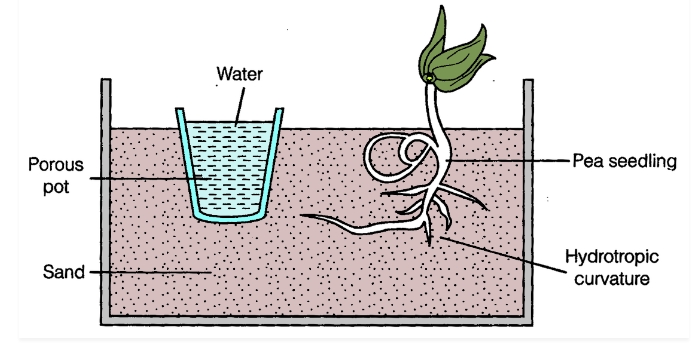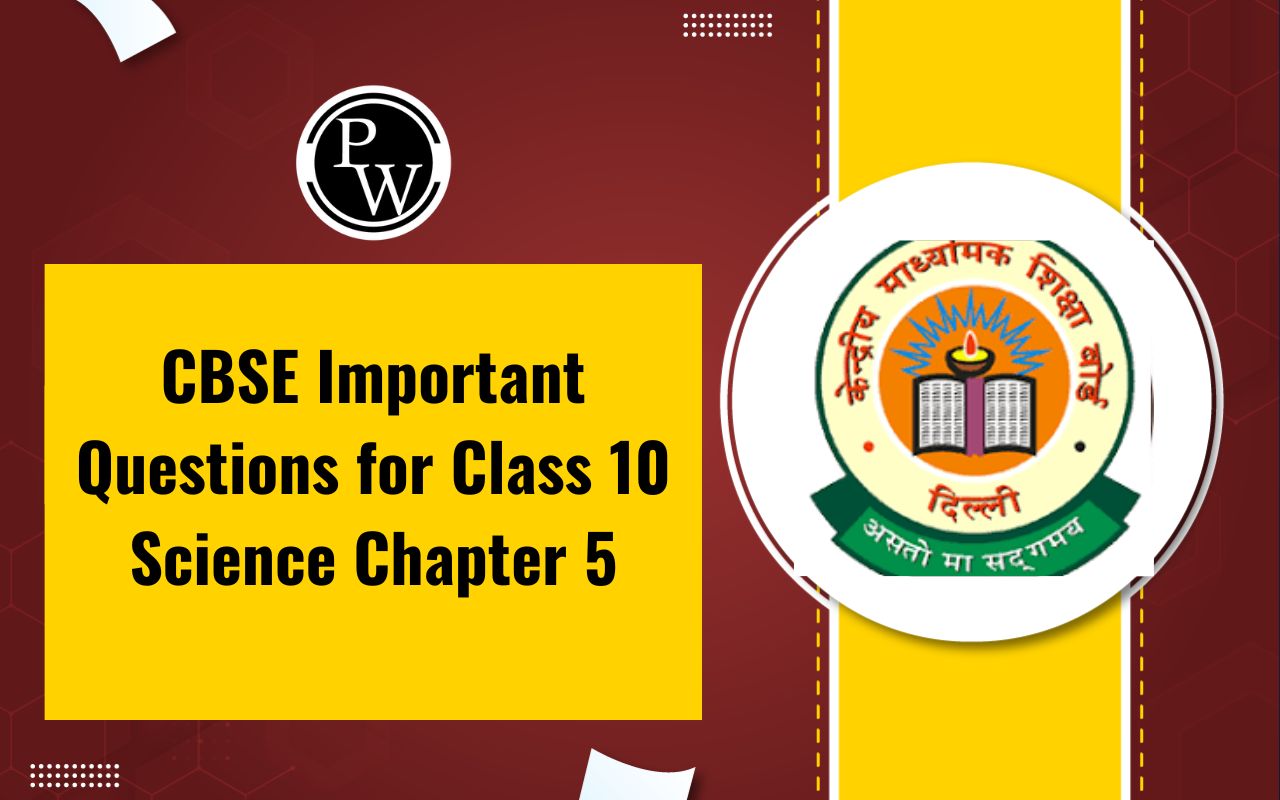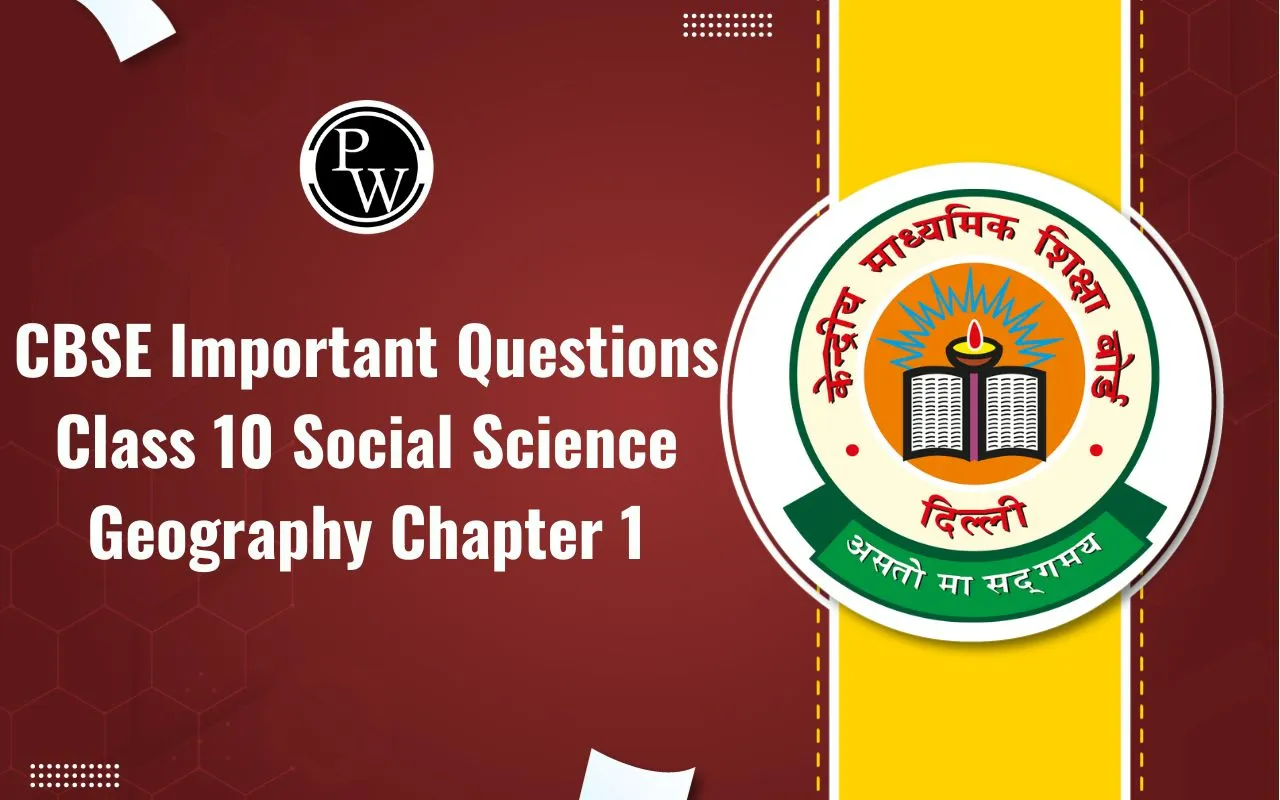
NCERT Solutions for Class 10 Science Chapter 7: NCERT Answers for Science Class 10 Chapter 7 As they get ready for the test, students who have control and coordination tend to be more confident. Students can compare their answers to the sample responses by using the detailed solutions to the NCERT textbook problems. The exercises and in-text questions included in the NCERT textbooks are simply explained in the NCERT Solutions for Class 10 Science of this chapter.
Seasoned experts have meticulously crafted the NCERT Solutions, so students may trust them to provide a thorough understanding. Students' doubts can be promptly answered by consulting these solutions, which can also help them prepare better for exams.Class 10 Science Chapter 7 Control and Coordination
NCERT Solutions for Class 10 Science Chapter 7, "Control and Coordination," offer a comprehensive guide to understanding how organisms coordinate and control various bodily functions. This chapter primarily focuses on the human nervous system and hormonal regulation, while also exploring how plants coordinate responses to external stimuli.NCERT Solutions for Class 10 Science Chapter 7 starts with an overview of the nervous system, explaining the structure and function of neurons, how nerve impulses are transmitted, and the role of the brain and spinal cord in coordinating body functions. Reflex actions are also discussed, highlighting the mechanism of involuntary actions for protection.
NCERT Solutions for Class 10 Science Chapter 7 PDF
The NCERT Solutions provide clear, concise answers to textbook questions, enhancing students' understanding of both theoretical and practical aspects of control and coordination in living organisms. Here we have provided NCERT Solutions for Class 10 Science Chapter 7 Control and Coordination pdf -NCERT Solutions for Class 10 Science Chapter 7 PDF
NCERT Solutions Class 10 Science Chapter 7 Question Answers
Here we have provided NCERT Solutions for Class 10 Science Chapter 7 -Questions Page number 119
1. What is the difference between a reflex action and walking?
Solution:
The automatic movements that happen in reaction to stimuli are known as reflex actions. They take place when the brain's conscious regions are not engaged. Every reflex response is an unconscious behaviour. The central nerve systems of the brain and spinal cord are involved in reflex activity. Alternatively, voluntary acts are those that are managed by the brain's cerebellum. We learn to walk as we mature. The brain controls walking, which is something that is intentionally done as needed.2. What happens at the synapse between two neurons?
Solution:
Electric signals are transformed into chemicals at the synapse between two neurones. These chemicals can readily traverse the gap and transmit the chemical message to the subsequent neurone, where it is transformed back into an electrical signal.3. Which part of the brain maintains the posture and equilibrium of the body?
Solution:
The brain region known as the cerebellum is in charge of regulating motor function. As a result, it is the body part responsible for preserving posture and balance.4. How do we detect the smell of an agarbatti (incense stick)?
Solution:
The nose is capable of detecting the scent of an agarbatti. The nose's olfactory receptors provide an electrical signal to the frontal brain. This signal is interpreted by the front brain as the incense stick's aroma.5. What is the role of the brain in reflex action?
Solution:
In reaction to a stimuli, reflex actions are generated instantly without any time for thought. For example, the nerves that control hand muscles are linked to the sensory nerves that sense heat. Reflex arcs are made up of this connection between the nerves' input signal detection (output) and fast nerve signal response (input). The spinal cord produces reflex actions, and the brain receives the information. This facilitates the brain's ability to store and recall this event for later use. The brain aids in the person's awareness of the stimuli and helps them avoid future situations that could offer a threat.Questions Page number 119
1. What are plant hormones?
Solution:
Plant hormones are chemical compounds that a plant produces at specific locations and moves to other areas as needed. Plant hormones play a role in regulating development, growth, and environmental response. Examples are cytokines, ethylene, abscisic acid, and auxins Gibberlin's.2. How is the movement of leaves of a sensitive plant different from the movement of a shoot towards light?
Solution:
| Sl. no | Movement of leaves of a sensitive plant | Movement of a shoot towards light |
| 1 | It does not depend on the direction of stimulus applied. | Depends on the direction of stimulus applied. |
| 2 | Nastic movement | Tropic movement |
| 3 | Touch is the stimulus | Light is the stimulus |
| 4 | Caused by the sudden loss of water from the swellings at the base of leaves | Caused by the unequal growth on the two sides of the shoot. |
| 5 | Not a growth movement | Growth movement |
| 6 | Occurs very fast | Occurs slowly |
3. Give an example of a plant hormone that promotes growth.
Solution:
Auxins and Gibberlins are the hormone responsible for the growth of plant. Auxins are responsible for the cell elongation in shoot and also regulate growth. Gibberlin is responsible for stem elongation and germination.4. How do auxins promote the growth of a tendril around a support?
Solution:
Plant hormones called auxins are secreted at the terminals of shoots and roots. At the tips of tendrils are auxins. Auxins are touch-sensitive, thus tendrils grow more slowly when they are linked to any kind of support. In order to obtain support, they must travel to the opposite side of the tip; as a result, the tendril bends in the direction of the support and grows quicker on the opposite side.5. Design an experiment to demonstrate hydrotropism.
Solution:
To demonstrate hydrotropism in plants. Procedure : i. Plant a seedling in a vessel containing soil. ii. Adjacent to the seedling put a porous pot containing water. iii. Leave the set up for few days. Observation: iv. On examining the roots, it is observed that the roots bend towards the source of water and do not grow straight. Result: A
Questions Page number 125
1. How does chemical coordination take place in animals?
Solution:
Hormones are chemical messengers that help animals coordinate their chemical processes. Certain endocrine glands secrete substances known as hormones. Animal growth, development, and homeostasis are all regulated by hormones.2. Why is the use of iodized salt advisable?
Solution:
It is advised to use iodised salt to prevent iodine deficiencies. Reduced iodine consumption will result in less thyroxine being released by the thyroid gland. This has an impact on protein, lipid, and carbohydrate metabolism. As a result, if iodine consumption is reduced, goitre may result.3. How does our body respond when adrenaline is secreted into the blood?
Solution:
The hormone adrenaline is released when someone is scared or experiencing mental instability. The heart will beat faster as adrenaline hits the heart, increasing the amount of blood that gets to our muscles. Due to the diaphragm and rib muscles contracting, adrenaline also quickens breathing. In addition to raising blood pressure, an adrenaline rush also permits more glucose to enter the blood. All of these things happen as a result of our body reacting to the blood's release of adrenaline.4. Why are some patients of diabetes treated by giving injections of insulin?
Solution:
A person with diabetes has reduced or stopped generating the hormone insulin by their pancreatic cells. Extra glucose is converted to glycogen by insulin, which controls blood glucose levels. An individual's blood glucose level is impacted when insulin is not created sufficiently, which might have negative consequences. Insulin injections are used to treat diabetes patients in order to maintain blood glucose and insulin levels.Exercise Questions Page number 126
1. Which of the following is a plant hormone?
(a) Insulin
(b) Thyroxin
(c) Oestrogen
(d) Cytokinin
Solution:
Answer is d) cytokinin. Cytokinin is a plant hormone whereas Insulin, Thyroxin, Oestrogen are the hormones produced by animals.2. The gap between two neurons is called a
(a) Dendrite.
(b) Synapse.
(c) Axon.
(d) Impulse.
Solution:
Answer is (b) Synapse A dendrite is a brief, branched projection of a nerve cell that serves as a conduit for impulses that are sent from the cell body to other cells at synapses. An axon, also called a nerve fibre, is a long, thin projection of a vertebrate nerve cell or neurone that normally conducts action potentials, which are electrical impulses, away from the nerve cell body. Information is transmitted to various neurones, muscles, and glands by the axon. An electrical signal called an impulse moves along an axon.3. The brain is responsible for
(a) Thinking.
(b) Regulating the heartbeat.
(c) Balancing the body.
(d) all of the above.
Solution:
Answer is (d) all the above Brain is responsible for thinking, brain regulates the heartbeat, and it balance the body.4. What is the function of receptors in our body? Think of situations where receptors do not work properly. What problems are likely to arise?
Solution:
Our body is made up of receptors, most of which are found in the sense organs. Receptors gather data about environmental changes and transmit that data to the brain, which reacts to the change it detects. The body does not react when external cues cannot generate nerve impulses due to malfunctioning receptors.5. Draw the structure of a neuron and explain its function.
Solution:
Neurons are nerve cells which are functional units of the nervous system. Three main parts of neurons are Dendrites, Axons and cell body. 
6. How does phototropism occur in plants?
Solution:
Phototropism is the term used to describe a plant's directional movement and development in reaction to light. Increased auxin on the dark side and decreased auxin on the lighted side cause phototropism. A leaf on the darker side grows more quickly due to the presence of auxin, which causes it to bend in the direction of the light source.7. Which signals will get disrupted in case of a spinal cord injury?
Solution:
Both the impulses arriving at the receptors and the signals leaving the neurones will be interfered with in the event of a spinal cord injury. In the spinal cord, these two signals combine to form a bundle. Both of these impulses are thus interfered with.8. How does chemical coordination occur in plants?
Solution:
Hormones are a unique class of chemicals that regulate and coordinate plant growth, development, and reactions to their surroundings. Hormones are generated in one area of the plant and distributed throughout the entire plant to all areas that require them. The five main categories of phytohormones are ethylene, auxins, gibberellins, cytokinins, and abscisic acid. These phytohormones are either growth inhibitors, like abscisic acid, or growth promoters, such auxins, gibberellins, cytokinins, and ethylene.9. What is the need for a system of control and coordination in an organism?
Solution:
An organism consists of several organs. An organism's life depends on the precise regulation and synchronisation of these organs. The endocrine system's glands discharge a variety of fluids into an organism's body. An organism's entire growth and development are controlled by these hormones. The central nervous system is in charge of all other daily decisions, including those involving voluntary and involuntary actions (CNS). Every action we take as humans requires coordination. The environment sends information to our neurological system, which processes it and causes a reaction. The hormone system, or endocrine system, facilitates the integration of multiple metabolic processes, including development, reproduction, and all reflex actions (adapting to different give-up scenarios). Plants require carbon dioxide, water, and sunlight for photosynthesis to occur, and their hormone system aids in this process. The plant body's hormonal system supports the tendrils of climbing plants, the roots bend towards water, the stem grows towards sunshine, and the stomatal openings in leaves open to let in carbon dioxide gas. Therefore, an organism needs a mechanism for coordination and control.10. How are involuntary actions and reflex actions different from each other?
Solution:
| Reflex actions | Involuntary actions |
| 1. Rapid automatic responses to a stimulus without the conscious involvement of the brain | 1. Occurs without the consciousness of an organism |
| 2. Controlled by spinal cord | 2. Controlled by mid brain or medulla oblongata |
| 3. Very quick and instantaneous | 3. Relatively slower |
| 4. May involve any muscle or a gland | 4. Involves only smooth muscles |
| 5. Can be conditioned | 5. Cannot be influenced by external conditioning |
| Examples: Blinking of eyes, salivation | Examples: Beating of heart, blood circulation |
11. Compare and contrast nervous and hormonal mechanisms for control and coordination in animals.
Solution:
| Nervous control | Hormonal Control | ||
| 1 | It consists of nerve impulses between PNS, CNS and Brain. | 1 | It consists of the endocrine system which secretes hormones directly into blood. |
| 2 | Here response time is very short. | 2 | Here response time is very long. |
| 3 | Nerve impulses are not specific in their action. | 3 | Each hormone has specific actions. |
| 4 | The flow of information is rapid. | 4 | The flow of information is very slow. |
12. What is the difference between the manner in which movement takes place in a sensitive plant and the movement in our legs?
Solution:
| Sl. no | Movement in sensitive plants | Movement in our legs | |
| 1 | The movement in a sensitive plant is a response to stimulus (touch) which is an involuntary action. | 1 | Movement in our legs is a voluntary action. |
| 2 | No special tissue is there for the transfer of information | 2 | A complete system CNS and PNS is there for the information exchange. |
| 3 | Plant cells do not have specialized protein for movements. | 3 | Animal cells have specialized protein which help muscles to contract. |
Benefits of NCERT Solutions for Class 10 Science Chapter 7
NCERT Solutions for Class 10 Science Chapter 7 "Control and Coordination" offer several benefits to students, helping them grasp complex biological and physiological concepts. Some key benefits include:NCERT Solutions for Class 10 Science Chapter 7 FAQs
Which is the fastest method of control and coordination?
What are the reasons for control and coordination?
What is the first way of control and coordination?
What part of the brain is control and coordination?










